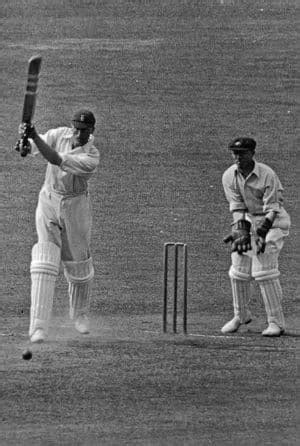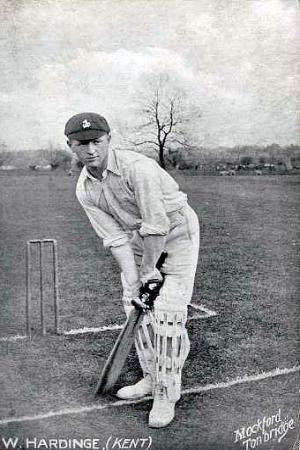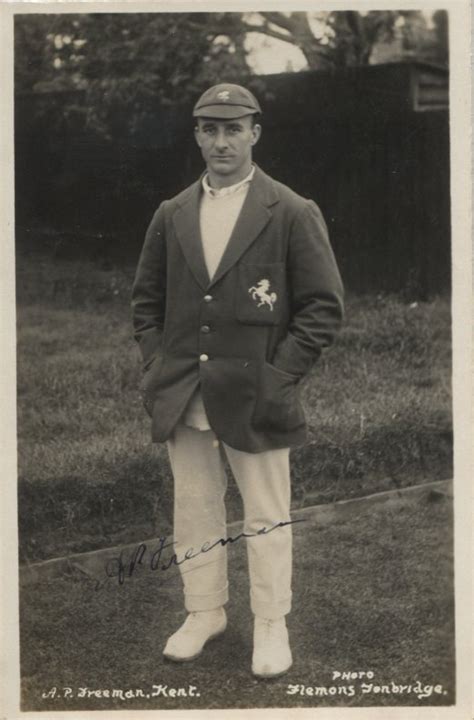I was browsing, as you do, through my collection of back copies of The Cricketer magazine, and I happened to come across their summary of Kent’s 1930 season, a year that was rather overshadowed by the astonishing batting of the new 22-year-old Australian phenomenon, Donald Bradman, making his first visit to England. Kent finished 5th that year, behind the champions Lancashire, Gloucestershire, Yorkshire and Nottinghamshire, but their style of play was particularly appreciated. “As usual Kent went all out for it; with the resources at their command they did extremely well, their cricket being much appreciated, both at home and away”. Gratifying words for Kent supporters.
But what I noticed most of all was that in the magazine’s opinion, “they relied too much on their old hands, of whom Woolley, Freeman and Hardinge were the shining lights.” They noted that “the attack depended too much on Freeman” but any bowler who can top the bowling averages by taking 258 wickets in a Championship season at an average of 16.17 is going to be heavily depended upon. All the other bowlers added together took only 212 wickets that summer, and remarkably, not a single one of those was taken by an amateur player. Freeman bowled 1760.5 overs that summer, enough to exhaust anybody who was still in the first flush of youth, but he was at that time 42 years old. Even so, he was a youngster compared with the man who topped the club’s batting averages that summer, Frank Woolley. This amazing cricketer, in my view the best and most complete player ever to have played for the county, scored 1886 runs at 49.63, an average exactly 13 runs higher than the next man, the part-time amateur Aidan Crawley. Woolley was born in May 1887, making him, at 43, within ten days of being exactly one year older than Freeman.

But wait a minute – what about the man who was fourth in the batting averages (exactly 1500 runs at 31.91) and second in the bowling averages (66 wickets at 21.48)? Wally Hardinge, for it was he, was another year older than Woolley, and at the age of 44 (twice the age of Bradman) batted 54 times for the county and bowled 712.5 overs. The Cricketer observed that Hardinge “had the most successful season of his long career as a bowler”.

And yet, for none of these men was it their final season. Tich Freeman, who first played for the club in 1914, aged 26, did not retire until 1936, when he was 48 years old. Frank Woolley, who was part of the county’s first ever Championship side in 1906, had his final match in 1938, when he was 51. On his fiftieth birthday in 1937, he took 5 for 59 against Essex at Gravesend, in the same match that he topped 56,000 first-class runs. Wally Hardinge, who had also played in that wonderful 1906 team having made his debut four years earlier aged 16, finally put away his bat in 1933, as a mere youngster of 47.

I could probably add that Wilfred Rhodes of Yorkshire retired at the end of the 1930 season, aged 53, and a later edition of The Cricketer, from the 1960s, features a photo of him bowling in a club game at the age of 81. There is also in the same issue an obituary of the Nottinghamshire batsman William Whysall, who died of septicaemia at the age of 43, after a season “when he had reached his best”, according to The Cricketer. And, moving forward nine decades, how old is our own Peter Pan, Darren Stevens?
I am not suggesting that it automatically follows that the older a cricketer gets, the greater his or her success will be, and I realise that cricket has changed dramatically over the past 90 years. Tich Freeman, for example, was not much of a batsman and even less of a fielder, so probably would not have got into the county side these days, even if wickets were still uncovered, thus helping the wrist spinner. But certainly age should not be a factor in deciding who should or should not play cricket at the top level. I’m not even sure if it still applies, but there was recently a fairly daft ECB idea that clubs would be rewarded financially for fielding a certain number of players under the age of, I think, 25 in their county sides. I am all for encouraging youth and not being frightened of giving them the opportunity if they deserve it (think Zak Crawley here, the same age as Bradman in 1930), but to pick somebody just because they are younger than a player who is still worth a place on merit seems to me to be counterproductive, and not fair on the older player nor on the spectators who want to see the best available players on show all the time.
The argument in favour of going for youth was, I admit, strengthened by the season just passed, when in the absence of most overseas cricketers, all counties had to blood some of their youngsters. For Kent, Jordan Cox, Ollie Robinson and Marcus O’Riordan all showed immense promise and they will be hard to dislodge even if we get back to same sort of normality next year. But that should not mean that we, or any other county, automatically shows the door to the older brigade, especially when these days it seems that 34 is about the age at which players start being referred to as ‘veterans’. That makes me a veteran twice over.
A player is as old as he feels. And as good as his statistics.
Merry Christmas!
0 Comments